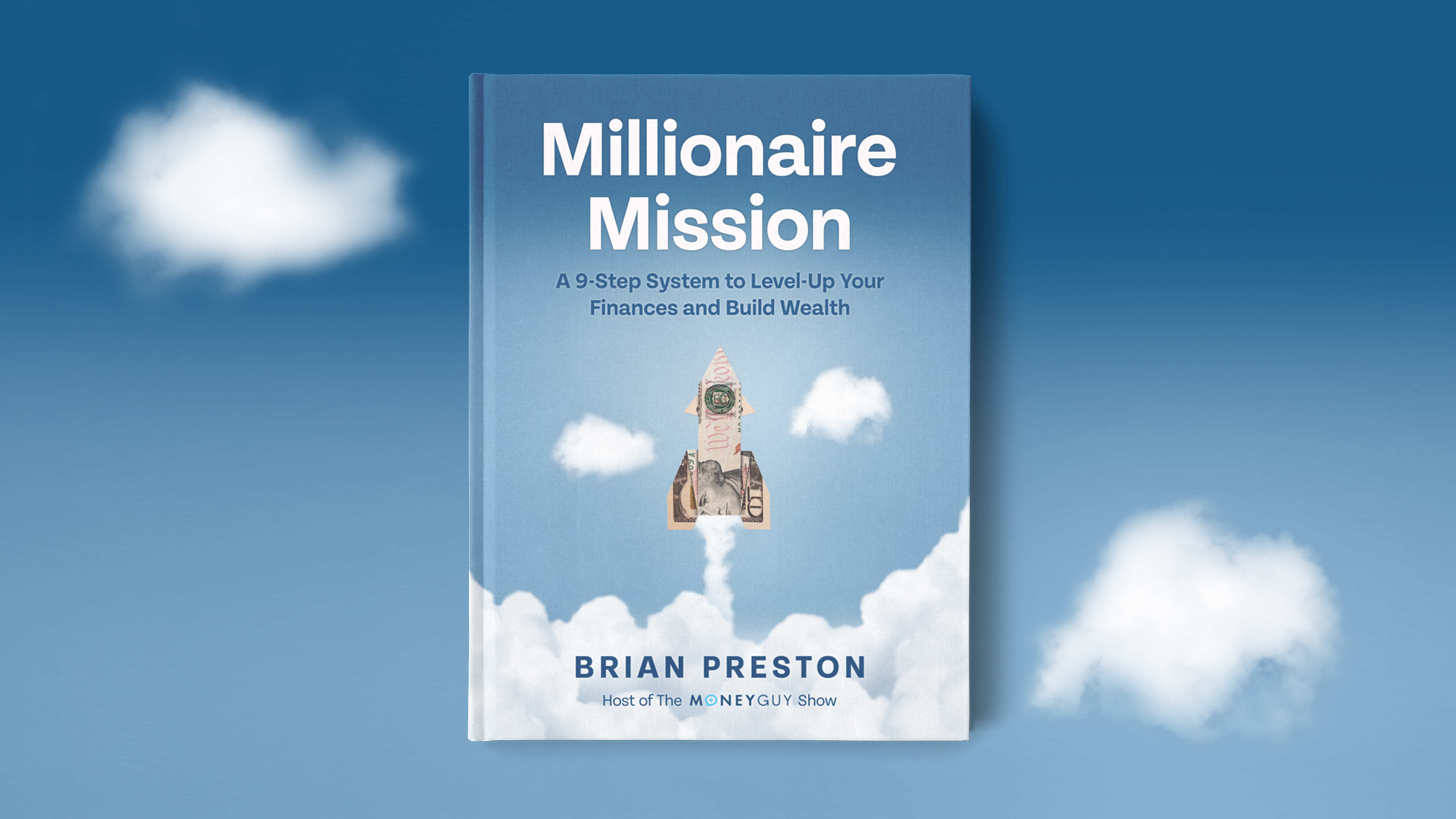
Change your life by
managing your money better.
Subscribe to our free weekly newsletter by entering your email address below.

Subscribe to our free weekly newsletter by entering your email address below.
Tired of the stock market roller coaster? While dramatic headlines scream “SELL!” and your emotions whisper “panic,” there’s a better way. This video dives into the fascinating world of market cycles, uncovers time-tested strategies that help smart investors sleep at night, and reveals how thinking like a “financial mutant” can transform your investment journey from anxiety-inducing to wealth-building.
Subscribe on these platforms or wherever you listen to podcasts! Turn on notifications to keep up with our new content, including:
Are You Losing Sleep?
The market’s going through a bit of a rough patch right now. From late January 2025 to the time of this recording, the S&P 500 is down a little under 6%, and naturally, the internet is freaking out. “I got to get out of here! Down! Get a hold of yourself!”
I’m sure you’ve seen all the headlines and YouTube titles saying, “This is it! It’s over! The market’s collapsing! The sky is falling!” And this is something the news cycle and the media in general does a lot. Oh my god! Oh no!
Anytime there’s political change, geopolitical conflicts, or a shift in economic policy, and then you add on top of that some market volatility, people will actually want to burn it all down. They will make you feel like you should sell while you can still get something because we’re headed for disaster.
Here’s the thing though: we don’t want you to panic. In this video, we’re going to look at past market performance, investing behavior, and what you can do to help avoid a lot of that market anxiety that folks tend to experience when we’re in these downturns. One thing you can do right now that will help us out is smash that like button! Come on, show us a little love!
Now, without a doubt, we live in a crazy time and there is a ton going on, and sometimes this can lead to stress and cause folks to make panic decisions in pursuit of feeling better in the short term—that little additional piece of mind. We hear this as financial advisers all the time; people will say stuff like, “This time is different! We live in a brand new paradigm! I’m selling everything!”
But I’ve been doing this for three decades, and through that experience, I’ve learned to keep my emotions in check. And we’ve even developed a little saying here at The Money Guy: “When in doubt, zoom out.”
If you look at the current year-to-date, yes, we have taken a dip, but if you zoom out and look at the last 365-day period, we’re still up shy of 12%. And if we look at the historical performance of the market over a much longer timeframe, like 30 or 35 years, we’re up big time. In fact, if you look overall, the return of the S&P 500 from 1989 to right now shows a very strong overall upward trajectory of over 3,000%. So a near 6% drop in the span of a few weeks is most likely not the cause for alarm that a lot of folks are making it out to be.
Especially when we overlay political administrations over those same market returns, you can see that over the long term, political administrations actually have little bearing on the overall market performance, even if businesses and companies make short-term adjustments in response to new policy.
But what if this is, in fact, a new paradigm? What if this time really is different, and market doomsday is upon us, and we’re headed for that huge crash? Should you be worried?
Let’s actually look at the numbers. If you take into account the three biggest crashes in most recent history, starting with the dot-com bubble: from 2000 to 2002, the market fell 47%. If you weren’t around for this or don’t remember, the masses were in complete panic mode. Indeed, it was a prolonged period of uncertainty since it lasted multiple years. People thought that the market would never recover, that it was the end of the US as the dominant force on the global stage. But look at what happened – the run from 2002 to 2007 saw the market climb 120% from that low.
So how about the Great Recession? The same thing – it wiped out portfolios and fell 55%. The same panicked headlines were everywhere. And then what? We saw the market experience historic gains, returning 528% from 2009 to 2020.
And the one I’m sure we all remember: the COVID crash. This one was steep, and it was quick. In the span of weeks, the market dropped almost 34%. I don’t need to tell you that the headlines were nothing short of catastrophic. But then, wouldn’t you know it, the returns from COVID up until the most recent all-time high were almost 200%. And that takes us to where we are today.
The point of me taking you through all these is to show you that recessions come, recessions go, but it’s a fool’s errand to try and time your investments based upon what you think a recession or market volatility is coming your way. So what we don’t want is for you to try and dance around these fluctuations by changing your investment behavior on the fly in the middle of volatility based upon what you think the market’s going to do.
So we’ve covered what not to do, and when it comes to what you actually can do to better weather market volatility, there are a few key points:
Remember that market fluctuations are actually normal. In fact, the average intra-year market decline is around 14%. This means on average, markets fall 14% from their highs before recovering, all within a given year. These drops can feel alarming, but they’re a normal part of investing. And despite these dips, the market has historically ended the year positive about 76% of the time, showing that staying invested through volatile periods tends to pay off in the long run.
And that’s the next takeaway: keep a long-term perspective. Warren Buffett famously said, “The stock market is a device for transferring money from the impatient to the patient.” If you’re invested for the long haul for 30, 40, even 50 years, small dips and corrections don’t stress you out.
Especially if you apply this next takeaway: don’t try to time the market. Instead, do what’s called dollar-cost averaging. Buy in at regular intervals – say weekly or monthly – to spread out your risk. If the market dips while you’re dollar-cost averaging, you may even get excited! Many of you are already doing this with your 401(k) or the Roth IRAs that you are funding monthly.
Those drops in price mean you’re actually buying at a discount. It baffles me to this day how the stock market is the only store in the world where people run towards the exit when everything’s on sale. Stay focused on your financial goals, not the day-to-day market drama.
Next, keep a diversified portfolio. This can help mitigate a lot of that anxiety around market performance, and it can actually protect you from a lot of the volatility, depending upon what you’re invested in and your personal financial goals. A good diversified portfolio has a good mix of equities, but it will also be offset by bonds, cash, and maybe even a little real estate. A diversified portfolio helps ensure your investment plan is good before, during, and even after the market drama.
And lastly, maintain those cash reserves. Remember, any money that you’ve invested in the financial markets is money you should be able to walk away from for 5 to 7 years. Market volatility doesn’t exist in a vacuum, and when it rains, it might even pour. The job market may be affected, cost of living may increase, and in general, unforeseen expenses might happen. And that’s what an emergency fund is for.
Having emergency funds of 3 to 6 months will ensure that market dips won’t force you into making those desperate decisions. And if you’re retired or even nearing retirement, consider keeping even more cash on hand – we suggest something beyond 12 to 18 months to avoid withdrawing investments at the worst possible time or even taking a loss.
All this is to say: don’t buy into the clickbait, don’t buy into the media trying to scare you, don’t buy into all of that hogwash. Instead, change your perspective, be a financial mutant, and remember: always be buying into the markets and building your great, big, beautiful tomorrow.
I’m your host Brian Preston, Money Guy team out!


How Much Should You Save?
How much of your income can you replace in retirement? You can replace different portions of your income in retirement…
View Resource
Are You a Prodigious Accumulator of Wealth?
Is your net worth on-track for retirement? A Prodigious Accumulator of Wealth (PAW) has twice or more than the expected…
View Resource


How about more sense and more money?
Check for blindspots and shift into the financial fast-lane. Join a community of like minded Financial Mutants as we accelerate our wealth building process and have fun while doing it.




It's like finding some change in the couch cushions.
Watch or listen every week to learn and apply financial strategies to grow your wealth and live your best life.
Subscribe to our free weekly newsletter by entering your email address below.